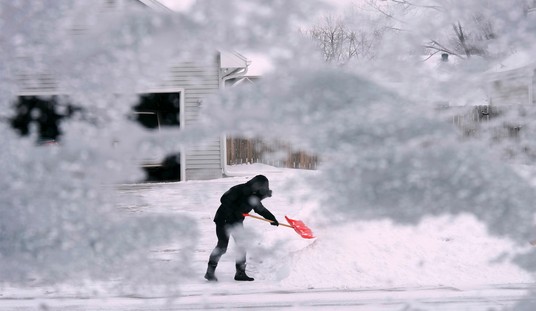The impeachment farce, the chaos in the Democrat primaries, and the spread of the coronavirus have taken our eyes off the ball of the real long-term threat to the US posed by The People’s Republic of China. Although the ChiComs are sustaining body blows to their economy thanks to their mismanagement of the coronavirus, they still invest heavily in military modernization and overseas. China represents an existential threat to the national security of the US in terms of growth of military capabilities but more importantly in the economic realm as they pursue their “Made in China 2025” and Belt-Road initiatives at home and abroad.
The purpose of this series is to present the contents of one of those reports in “bite-sized chunks” that are more easily digestible in order to convey a better understanding of the Chinese economy and its long-term challenges to the US and the world. Part I introduced and summarized the Congressional Research Service report, “China’s Economic Rise: History, Trends, Challenges, and Implications for the United States,” which forms the basis for this series. So far, we have covered the report’s summary, a history of China’s economic development since 1979, the two main factors contributing to their development over the years, measuring the size of China’s economy, China’s role as the world’s largest manufacturer, changes in China’s wage and labor cost advantages, foreign direct investment in China and the factors driving the outflow of foreign direct investment from China, and China’s merchandise trade patterns, including major trading partners and major Chinese trading commodities, and then the first part of the major long-term challenges facing the Chinese economy. Parts I, II, III, IV, V, VI, VII can be found here, here, here, here, here, here, and here.
This part covers the second part of the major long-term challenges facing the Chinese economy.
Environmental Challenges
China’s economic growth model has emphasized the growth of heavy industry in China, much of which is energy-intensive and high polluting. The level of pollution in China continues to worsen, posing serious health risks to the population. The Chinese government often disregards its own environmental laws in order to promote rapid economic growth.
China’s environmental challenges are illustrated by the following incidents and reports.
- A 2018 report by ExxonMobil estimated that China contributed about 60% of the growth in global CO2 emissions from 2000 to 2016, and that its emissions would surpass the combined CO2 levels of the United States and EU by 2025.
- A 2017 OECD report estimated the health costs of China’s air pollution in 2015 at $1.4 trillion, equivalent to 7.8% of its GDP.
- A 2015 study by the Rand Corporation estimated that the costs (in terms of health impact and lost productivity) from China’s air pollution were equal to 6.5% of GDP each year from 2000 to 2010. It further estimated the costs as a percentage of GDP of water pollution and soil degradation at an additional 2.1% and 1.1%, respectively.
- On August 12, 2015, a series of large explosions in several warehouses containing chemicals occurred in the Chinese port city of Tianjin, claiming the lives of at least 163 people. Some press reports have blamed poor government enforcement of environmental regulations for the disaster. For example, some in China have questioned why dangerous chemicals were warehoused so close to residential areas and have raised concerns over the extent of chemical contamination in the area that may have resulted from the explosions.
- The U.S. Embassy in Beijing, which monitors and reports air quality in China based on an air quality index of particulate matter (developed by the U.S. Environmental Protection Agency) considered to pose a health concern, reported that the air quality in Beijing for a majority of the days in January 2013 ranged from “unhealthy” to “hazardous” (based on 24-hour exposure) and, on a few days, it recorded high readings that were “beyond index.” The level of poor air quality in Beijing was termed by some in China as “Airpocalypse,” and reportedly forced the government to shut down some factories and reduce the level of official cars on the road. On December 9, 2013, China’s media reported that half of China was blanketed by smog.71 The U.S. Consulate General in Shanghai reported that were a number of days in December 2013 where its measurement of the air quality in Shanghai was hazardous or very unhealthy, and during some time periods on December 5, 2013, its readings were “beyond index.” According to the U.S. Embassy in Beijing, from 2008 to 2015, nearly two-thirds of the days in Beijing had air pollution considered to be unhealthy.
- In February 2013, China’s Geological Survey reportedly estimated that 90% of all Chinese cities had polluted groundwater, with two-thirds having “severely polluted” water.
- According to a 2012 report by the Asian Development Bank, less than 1% of the 500 largest cities in China meet the air quality standards recommended by the World Health Organization, and 7 of these are ranked among the 10 most polluted cities in the world.
The Chinese government has indicated that it is taking steps to reduce energy consumption, boost enforcement of environmental laws and regulations, reduce coal usage by expanding the use of cleaner fuels (such as natural gas) to general power, and relocate high-polluting factories away from large urban areas, although such efforts have had mixed results on the overall level of pollution in China. In addition, China has become a major global producer and user of clean and renewable energy technology. In January 2017, the Chinese government said it would spend $361 billion on renewable energy power generation by 2020.
Corruption and the Relative Lack of the Rule of Law
The relative lack of the rule of law in China has led to widespread government corruption, financial speculation, and misallocation of investment funds. In many cases, government “connections,” not market forces, are the main determinant of successful firms in China. Many U.S. firms find it difficult to do business in China because rules and regulations are generally not consistent or transparent, contracts are not easily enforced, and intellectual property rights are not protected (due to the lack of an independent judicial system). The relative lack of the rule of law and widespread government corruption in China limit competition and undermine the efficient allocation of goods and services in the economy. A New York Times article reported that (former) Chinese Premier Wen Jiabao’s family-controlled assets worth at least $2.7 billion. One study estimates that between 2001 and 2010, China was the world’s largest source of illicit capital outflows at $3.8 trillion. A 2012 survey by the Pew Research Center’s Global Attitudes Project reported that 50% of respondents said that corrupt officials are a very big problem (up from 39% in 2008). Chinese officials often identify government corruption as the greatest threat to the Chinese Communist Party and the state. The Chinese government’s anticorruption watchdog reported that 106,000 officials were found guilty of corruption in 2009.
Since assuming power in 2012, Chinese Xi Jinping has carried out an extensive anticorruption drive. China has reportedly sought cooperation with the United States to obtain extradition of 150 alleged corrupt officials who have fled to the United States. However, many analysts contend that government anticorruption campaigns are mainly used to settle political scores with out-of-favor officials. Some analysts contend that President’s Xi anticorruption drive is more about consolidating his own political than instituting reforms. In addition, there are some indicators that the current anticorruption campaign may be having a negative impact on the Chinese economy, due to hesitancy by some local officials to pursue projects they feel will lead to scrutiny from the central government. Many observers argue that meaningful progress against government corruption cannot occur without greater government transparency, a system of checks and balances, a free press, Internet freedom, and an independent judiciary. In October 2014, China held its fourth Plenum of the 18th Party Conference. The meeting focused on the need to enhance the rule of law in China, but emphasized the leading role of the Communist Party in the legal system.
China maintains a weak and relatively decentralized government structure to regulate economic activity in China. Laws and regulations often go unenforced or are ignored by local government officials. As a result, many firms cut corners in order to maximize profits. This has led to a proliferation of unsafe food and consumer products being sold in China or exported abroad. Lack of government enforcement of food safety laws led to a massive recall of melamine-tainted infant milk formula that reportedly killed at least four children and sickened 53,000 others in 2008. Transparency International’s Corruption Perception Index for 2016 ranked China 79th out of 176 countries and territories, up from 72nd in 2007.
Demographic Challenges
Many economists contend that China’s demographic policies, particularly its one-child policy (first implemented in 1979), are beginning to have a significant impact on the Chinese economy. For example, according to a McKinsey Global Institute study, China’s fertility rate fell from about 5.8 births per woman in 1964 to 1.6 in 2012. This is now affecting the size of the Chinese workforce.
The existence of a large and underemployed labor force was a significant factor in China’s rapid economic growth when economic reforms were first introduced. Such a large labor force meant that firms in China had access to a nearly endless supply of low-cost labor, which helped enable many firms to become more profitable, which in turn led them to boost investment and production. Some economists contend that China is beginning to lose this labor advantage. According to the Chinese government, the size of its working age population (ages 16 to 59) peaked at 925 million in 2011, but then fell for seven consecutive years to 897 million in 2018. The Chinese government projects that its working age population will drop to 830 million by 2030 and to 700 million by 2050. If these projections prove accurate, the Chines working age population could drop by 225 million individuals (2011-2050).
The one-child policy has also resulted in a rapidly aging society in China. According to the Brookings Institute, China already has 180 million people aged over 60, and this could reach 240 million by 2020 and 360 million by 2030. The population share of people aged over 60 could reach 20% by 2020, and 27% by 2030. With a declining working population and a rising elderly population, the Chinese government will face challenges trying to boost worker productivity (such as enhancing innovation and high-end technology development) and expanding spending on health care and elderly services. China’s Hukou (household registration) system also poses challenges to the government.
China’s Hukou System
First introduced in 1951, the Chinese Hukou (household registration) system is a categorization of its citizens based on both their place of residence and eligibility for certain socioeconomic benefits. Hukou is issued through a registration process administered by local authorities and solidified into inheritable social identities. The classification of the system is composed by two related parts: socioeconomic eligibility (agriculture/non-agriculture); and residential location (living in urban/rural areas).
The Chinese government imposed the system with the purpose of regulating population distribution, especially in regard to cities. Since economic reforms were begun in 1979, hundreds of millions of people have been allowed to leave their home towns to work in urban areas, such as Shanghai. The number of rural laborers working in China’s cities was 274 million in 2014, over one-third (36%) of the total workforce. Although such workers are allowed to reside in the cities where they work, they are generally denied access to social entitlements, such as pensions, medical insurance, and basic education for children. This forces such workers to save a very high level of their income to pay for these services. Due to China’s desire to increase the urbanization of its population, combat demographic disparities, and boost domestic consumption, the Chinese government is currently considering implementing new reforms to the Hukou system.
This part of the series on the rise of China’s economy ends here. The next part finishes the series by addressing the economic goals of the 19th Congress of the Chinese Communist Party, the Belt-Road Initiative, Made in China 2025, and the challenges to US policy of China’s economic rise.
The end.














Join the conversation as a VIP Member